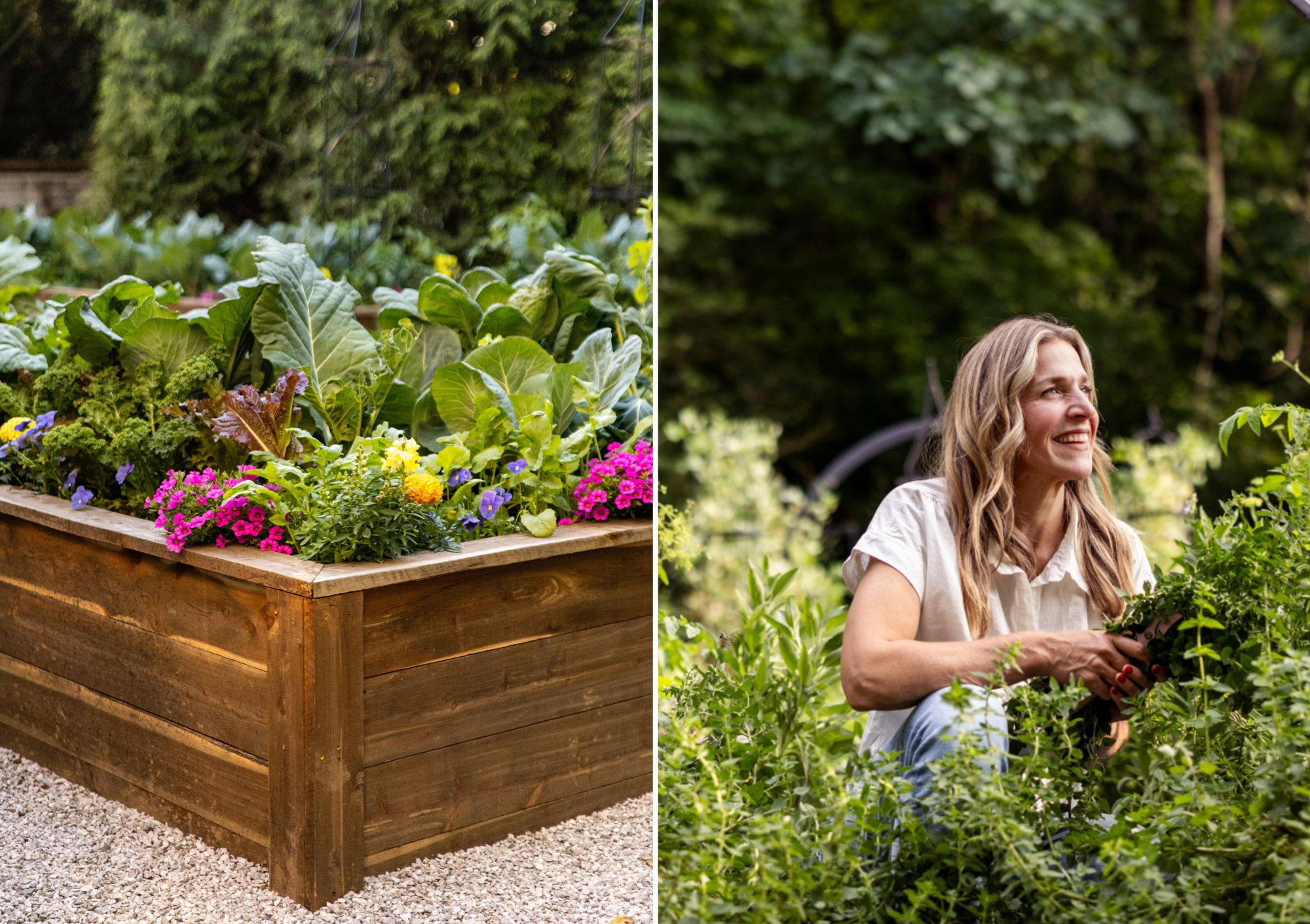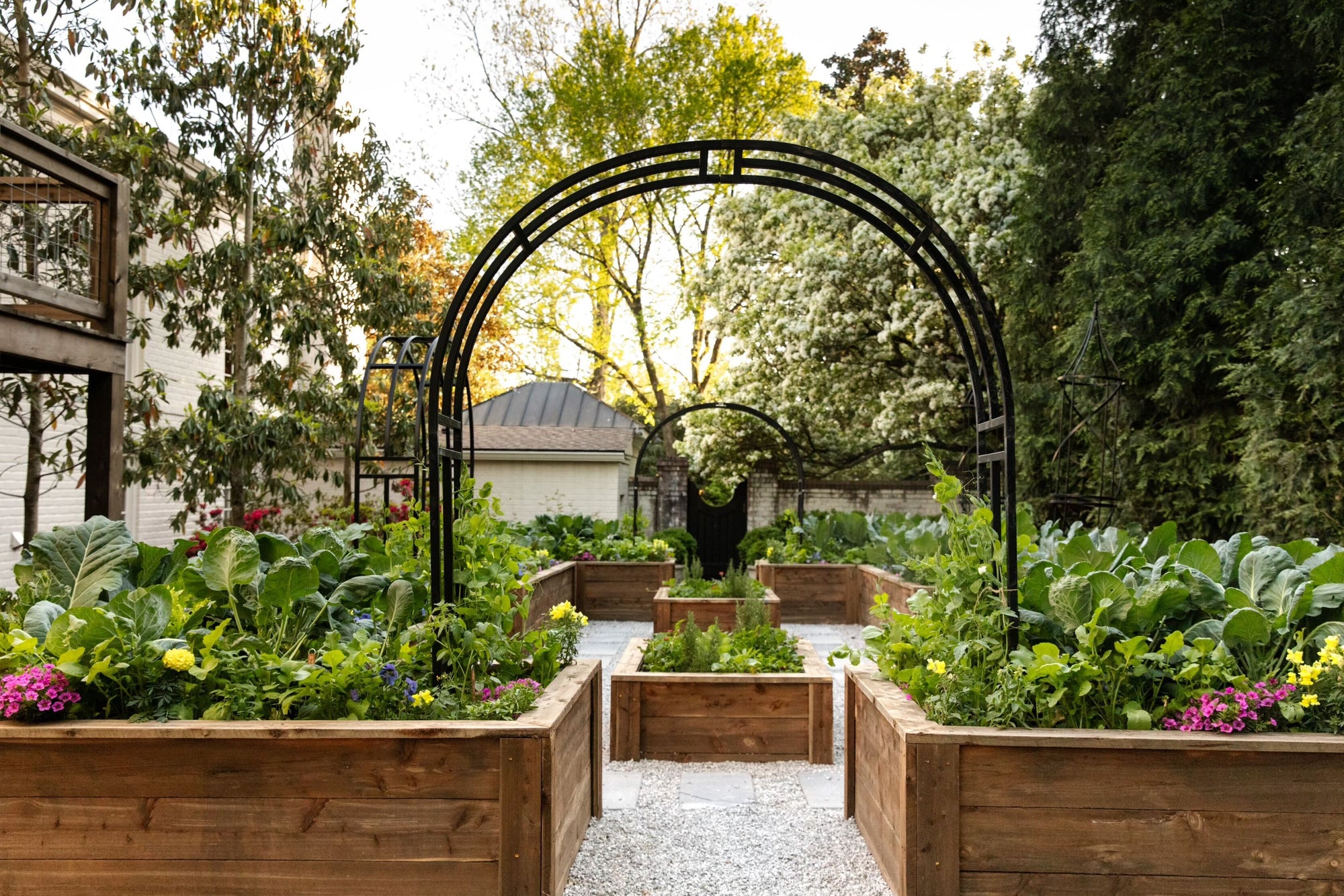Have you ever wanted to be someone who says things like, "I'm heading out to my garden to pick some rosemary"? Because, same. We'll be the first to admit that our gardening skills begin and end with just barely keeping a succulent alive. But recently, we've turned over a new leaf regarding plant parenthood. (Ha, get it?) Now that Clea is cooking at home (see here for proof) and Joanna is warming up to the idea (here for proof), we can't help but wonder how nice it would be to have some ingredients right in our backyard.
Let us introduce you to Nicole Burke, a fellow Nashville resident and the visionary behind Gardenary. The company's mission is to make gardening more accessible and less confusing for all—yes, even those of us with 'brown thumbs'! We instantly connected with Nicole's philosophy since ours is similar about organization: If we can do it, you can do it. Oh, and did we mention that her signature process includes containing and categorizing? We're all ears.
From deciding what to plant to the supplies you'll need, read on for Nicole's best advice for creating a kitchen garden when you lack the confidence to start.
*This blog contains affiliate links, which means we may earn a commission if you buy something.

photo credit: Victoria Quick
What advice do you have for someone who considers themselves a "brown thumb" but wants to start gardening?
"First of all, I believe there is no such thing as a brown thumb. It simply means that you need more experience growing plants! Don't try to run a marathon when you haven't even walked to the end of the block. In other words, start with the easiest plants to care for, like leafy greens and herbs, rather than a tomato plant, which can be more complicated. At Gardenary, we created a system (and an entire book!) around this concept called Leaves, Roots, and Fruit—and leafy greens and herbs are step one. That's because leafy greens and herb plants don't need a lot of space, sun, or care, making them perfectly suitable for someone just starting.
Easiest herbs to grow: Oregano, thyme, rosemary, and sage.
Easiest leafy greens to grow: Arugula, butter crunch, spring mix, kale, and Swiss chard.
"Then, after graduating from leaves and herbs, the next two steps in the Gardenary system are Roots and Fruit. Root plants are going to need a little bit more time, more space, and more care. Fruiting plants need the most of all three. So, fruit in our scenario is like the marathon, it's going to take the longest and need the most amount of care and resources. But, bottom line, don't despair and you'll get there. Even if you stay on step one forever, you'll have way more to harvest than you thought possible."

photo credit: Victoria Quick
What supplies do you need to start a kitchen garden?
"While you can use the ground, you'll have a much easier time gardening in a container or raised bed. You'll also need a schedule or system that will water your plants regularly—whether it's a watering can and a personal schedule or an irrigation system with a timer. Then, of course, the seeds and plants and great soil. I created my own 103 Blend soil, which is something you can make at home."
Here's a list of other tools that help Nicole get the job done, from containing to maintaining:















